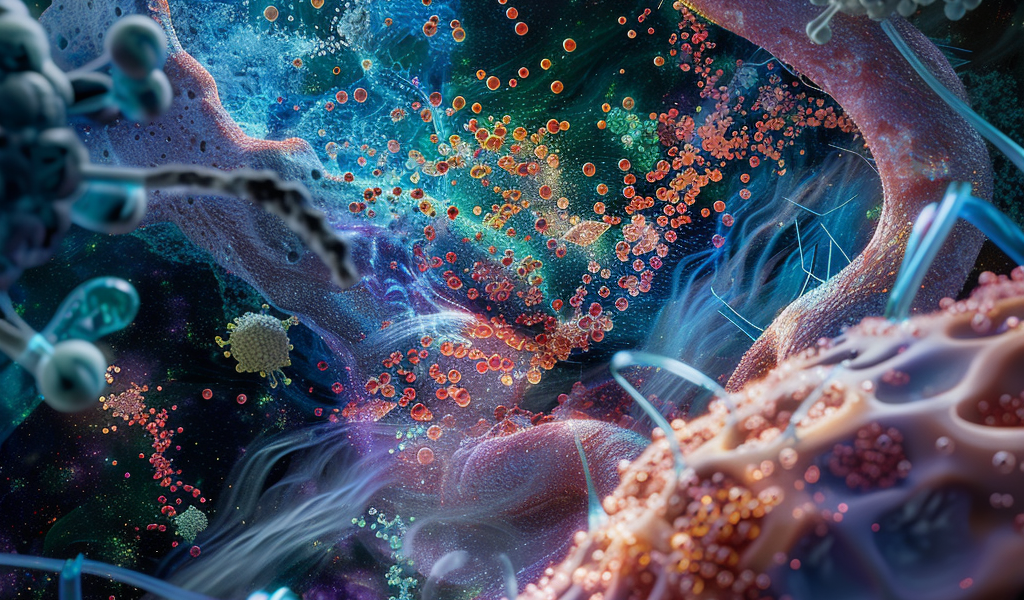New Discovery: Molecular Switch Protects Cells from Death
Researchers at Ludwig-Maximilians-Universität München have made a groundbreaking discovery that could change the landscape of cancer treatment and cell protection. A team led by Professor Alexander Bartelt from the Institute for Cardiovascular Prevention (IPEK) has identified a novel molecular switch that plays a crucial role in protecting cells from death, particularly in the context of oxidative stress.
Programmed cell death, also known as apoptosis, is a natural process that helps the body eliminate damaged or potentially harmful cells, including cancerous ones. However, the mechanisms behind this process are complex and not fully understood. The recent study, published in the journal Cell Death & Differentiation, sheds light on how oxidative stress influences cell death, offering potential new avenues for therapeutic interventions.
One of the key focuses of the research was on a form of cell death known as ferroptosis. This process occurs when lipids in the cell’s plasma membrane are attacked, leading to a cascade of reactions that ultimately result in the destruction of the cell. Ferroptosis has emerged as a significant area of study in recent years, and understanding how to control this process could have profound implications for treating various diseases, including cancer.
“Ferroptosis is a recently discovered form of cell death, and we’re searching for ways to control the process,” said Professor Bartelt. The research team concentrated on the proteasome, a cellular component that acts as a recycling center for proteins. The proteasome is responsible for breaking down old or damaged proteins, allowing their components to be reused by the cell.
Utilizing advanced mass spectrometry techniques, the researchers investigated whether the protein recycling process was disrupted during ferroptosis. Their findings revealed that the proteasome becomes clogged during this form of cell death, which accelerates the demise of the cell. This clogging effect is significant because it highlights a potential target for therapeutic intervention.
In the course of their research, the team identified an enzyme known as DDI2, which appears to enhance the recycling process within the proteasome. This enzyme acts as a protective agent against cell death, suggesting that it could be a viable target for therapeutic strategies. “DDI2 is a protease—a type of enzyme that can be therapeutically influenced,” explained Anahita Ofoghi, a key contributor to the study.
The implications of this discovery are far-reaching. By manipulating the activity of DDI2, researchers hope to develop new therapies that not only target cancer cells but also protect healthy cells from undergoing ferroptosis. This dual approach could lead to more effective cancer treatments while minimizing collateral damage to surrounding healthy tissues.
“We’ve contributed a small piece to the fascinating puzzle of ferroptosis,” Bartelt noted, emphasizing the importance of this research in the broader context of cellular biology and disease treatment. The team is optimistic about exploiting this molecular mechanism for future therapies, which could pave the way for innovative treatments that harness the body’s own cellular processes to combat diseases.
As research in this area continues to evolve, the potential for new therapeutic strategies based on the modulation of cell death processes promises to enhance our understanding of cancer biology and improve clinical outcomes for patients. The study represents a significant step forward in the quest to control cell death mechanisms, highlighting the intricate relationship between oxidative stress and cellular health.
This discovery not only opens new avenues for cancer therapy but also enhances our understanding of how cells can be protected from death under stress conditions. As the scientific community delves deeper into the mechanisms of ferroptosis and the role of enzymes like DDI2, we may be on the brink of significant advancements in medical science that could transform the treatment landscape for various diseases.
With ongoing research and clinical trials, the hope is that these findings will lead to the development of novel therapeutic agents that can effectively target cancer cells while safeguarding healthy tissues. Such advancements could represent a paradigm shift in how we approach cancer treatment and cellular health management.





